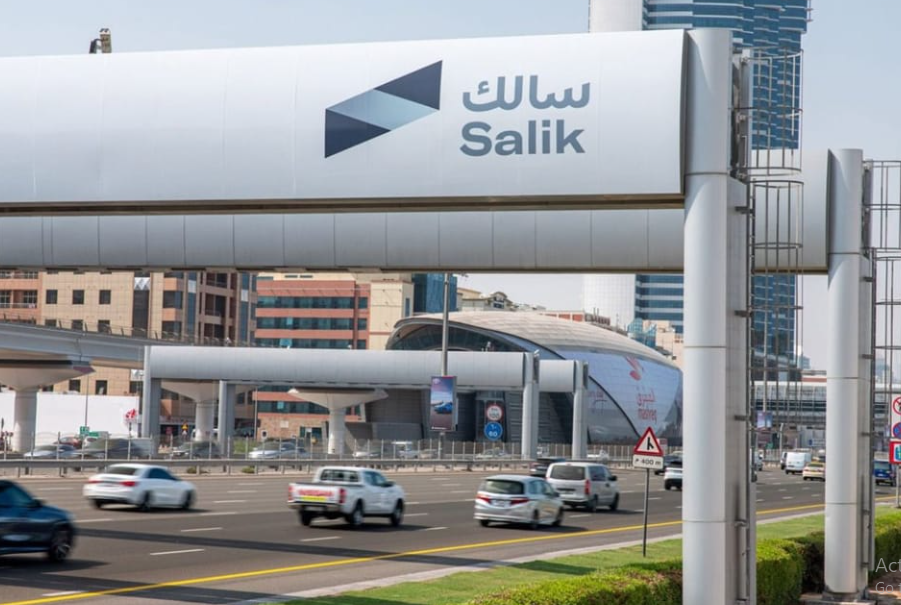The Business Bay Crossing Gate will help by:
- Diverting traffic from Jebel Ali to Sheikh Mohammed bin Zayed Road and Emirates Road.
- Reducing congestion on Al Khail Road by as much as 15%.
- Lowering traffic volumes on Al Rebat Street by around 16%.
- Cutting traffic on Financial Centre Street by 5%.
- Saving about 20,000 travel hours daily on the busy section of Al Khail Road between Al Rebat and Ras Al Khor Streets.
The Al Safa South Gate will help by:
- Reducing right-turn traffic from Sheikh Zayed Road to Al Meydan Street by approximately 15%.
- Decreasing traffic from Al Meydan and Al Safa Streets to Sheikh Zayed Road by about 42%.
- Lowering traffic on Sheikh Zayed Road between Financial Centre Street and Latifa bint Hamdan Street by roughly 4%.
- Optimizing the use of First Al Khail Road and Al Asayel Street by up to 4%.
Salik Company PJSC announced that the toll gates at the Business Bay Crossing and Al Safa South on Sheikh Zayed Road will be activated on November 24. This follows the completion of the Al Khail Road Development Project by the Roads and Transport Authority (RTA), which included building five bridges extending 3,300 meters and expanding 6,820 meters of road lanes at various locations along Al Khail Road, such as Al Jaddaf, Business Bay, Zaabeel, Meydan, Al Quoz 1, Ghadir Al Tair, and Jumeirah Village Circle.
Serving 1.5 million people, this project has reduced travel time by 30% and increased capacity at intersections and bridges by approximately 19,600 vehicles per hour.
The introduction of these toll gates is part of a broader plan to enhance and integrate road networks, facilities, public transport routes, and intelligent transport systems.
This initiative aligns with policies designed to lessen dependence on private vehicles and promote public transport use, improving traffic flow across Dubai’s network by directing vehicles to alternative routes like Sheikh Mohammed bin Zayed Road, Dubai-Al Ain Road, Ras Al Khor Street, and Al Manama Street. Additionally, using alternative Creek crossings, such as Infinity Bridge and Al Shindagha Tunnel, will facilitate smoother traffic and encourage residents and visitors to use less congested paths.
Transport Policies
These toll gates are part of transport policies that back road infrastructure projects and the public transport system. These policies aim to distribute traffic more evenly across the road network, optimizing the use of existing routes. They also promote a shift toward public transport options, including the metro, buses, marine transport, and other mobility solutions.
Existing toll systems have been effective, saving 6 million travel hours each year in Dubai, reducing traffic on Al Maktoum and Al Garhoud Bridges by 26%, and cutting travel times on Sheikh Zayed and Al Ittihad Roads by 24%, while increasing public transport ridership by about 9 million passengers annually.
Traffic Benefits
Global consultants have recommended installing toll gates at Business Bay Crossing and Al Safa South. The Al Safa South toll gate, which serves operational and regulatory purposes, is situated on Sheikh Zayed Road (between Al Meydan and Umm Al Sheif Streets) and will have a one-time toll fee for trips between the North and South Al Safa toll gates within an hour. This initiative aims to maintain traffic levels, manage traffic volumes, and control congestion across the road network and intersections.
The Business Bay Crossing toll gate will redirect traffic from Jebel Ali to Sheikh Mohammed bin Zayed Road and Emirates Road, reducing traffic on Al Khail Road by about 2,053 vehicles per hour, or approximately 15%, and decreasing traffic on Al Rebat Street by around 1,218 vehicles per hour, achieving a reduction of up to 16%. It will also lower traffic on Financial Centre Street by 5% and save around 20,000 hours daily on the busy stretch of Al Khail Road between Al Rebat and Ras Al Khor Streets.
Similarly, the operational Al Safa South toll gate will reduce right-turn traffic from Sheikh Zayed Road to Al Meydan Street by 15% and decrease traffic from Al Meydan and Al Safa Streets to Sheikh Zayed Road by approximately 1,070 vehicles per hour, which is a 42% reduction. It will also cut traffic on Sheikh Zayed Road by 4% while optimizing First Al Khail Street and Al Asayel Street by up to 4%.








